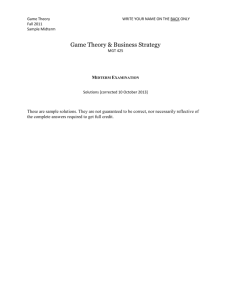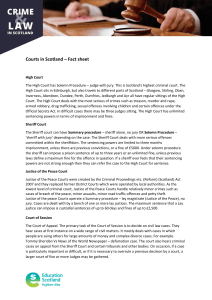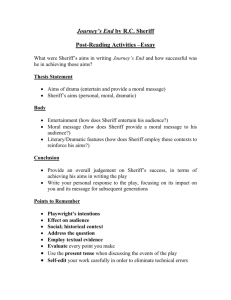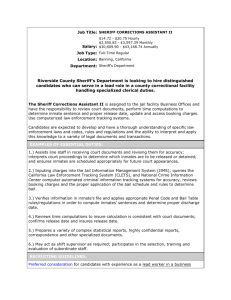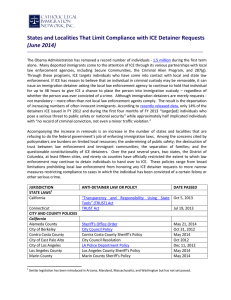sample midterm 1
advertisement
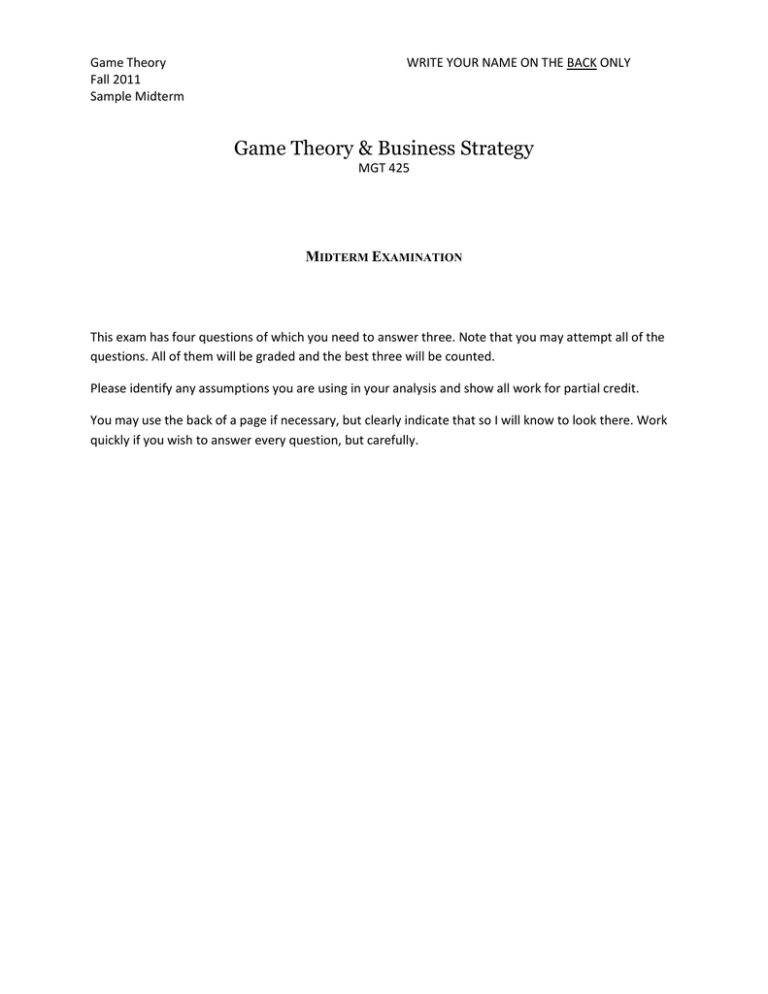
Game Theory Fall 2011 Sample Midterm WRITE YOUR NAME ON THE BACK ONLY Game Theory & Business Strategy MGT 425 MIDTERM EXAMINATION This exam has four questions of which you need to answer three. Note that you may attempt all of the questions. All of them will be graded and the best three will be counted. Please identify any assumptions you are using in your analysis and show all work for partial credit. You may use the back of a page if necessary, but clearly indicate that so I will know to look there. Work quickly if you wish to answer every question, but carefully. QUESTION 1. Consider the following strategic-form simultaneous game. Mork’s payoffs are listed first. Mork A B C X 80 , 30 85 , 15 95 , 25 Mindy Y 0 , 20 20 , 20 5 , 25 Z 20 , 20 5 , 5 5 , 25 a. Does either player have a dominant strategy? If yes, list it/them. b. Does either player have a dominated strategy? If yes, list it/them. c. List all pure strategy Nash equilibria of the above game? d. If Mindy’s payoffs in the top-left box (A,X) increased from 30 to 300, how would your answer to part c above change? Explain. e. Is the following statement true or false (explain your answer): In any strategic-form game, if a player has a dominant strategy, then all of the other strategies of that player are dominated. QUESTION 2. You and another firm are engaged in a joint venture. Each year, you and the other firm decide whether to invest effort in the joint venture (which is costly), or simply free-ride on the effort of the other firm. The game is represented below. You Effort No Effort Other Firm Effort No Effort 25 , 25 0 , 50 50 , 0 10 , 10 a. Formally confirm that this game is a prisoner’s dilemma. b. Imagine that you expect to play this game with the Other Firm each year and forever. The Other Firm employs a grim trigger strategy, cooperating each year only if you have been cooperative in every previous year. What must be true of the interest rate (numerically, what must the range of interest rates be) for cooperation to be sustainable? c. In one or two sentences, given your answer in part c., remark on how likely it is that cooperation will be sustained. d. Imagine now that, if you play non-cooperatively, the Other Firm will not be able to observe this for two years. That is, the other firm still plays the grim trigger strategy, but does not begin punishment for non-cooperative behavior until two years later. According to the online reading, does this make cooperation more or less likely? Briefly explain. QUESTION 3. Criminals escape from the Island of Marou either by the East Bridge or the West Bridge. The Sheriff can monitor only one bridge at a time. Crossing the West Bridge is a more treacherous, dangerous journey (half of those who try to cross die on the way). The Sheriff is paid $1,000 whenever he captures a criminal, but not when a criminal dies on the way. Each player tries to maximize his payoffs – the chance of escape for the criminal and the expected bonus payment for the Sheriff. The resulting game is represented below. Sheriff Criminal East West East 0.0 , 1000 0.5 , 0 West 1.0 , 0 0.0 , 500 a. Write down below the unique equilibrium of the above game. b. What is the criminal’s chance of escape in equilibrium? c. What is the Sheriff’s expected bonus payment in equilibrium? d. To encourage higher effort on the part of the Sheriff, his bonus is doubled. Every time he captures a criminal, he receives $2,000. That is, the Sheriff’s payoffs in the above game are all doubled. How does this change the equilibrium? Explain. QUESTION 4. Two friends are deciding where to go for dinner. There are three choices, which we label A, B, and C. Max prefers A to B to C. Sally prefers B to A to C. To decide which restaurant to go to, the friends adopt the following procedure: First, Max eliminates one of three choices. Then, Sally decides among the two remaining choices. Thus, Max has three strategies (eliminate A, eliminate B, and eliminate C). For each of those strategies, Sally has two choices (choose among the two remaining). a. Write down the extensive form (game tree) to represent this game. b. If Max acts non-strategically, and makes a decision in the first period to eliminate his least desirable choice, what will the final decision be? c. What is the subgame-perfect equilibrium of the above game? d. Does your answer in b. differ from your answer in c.? Explain why or why not. e. Briefly explain below what is Arrow’s Impossibility Theorem.
